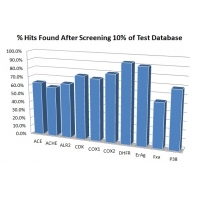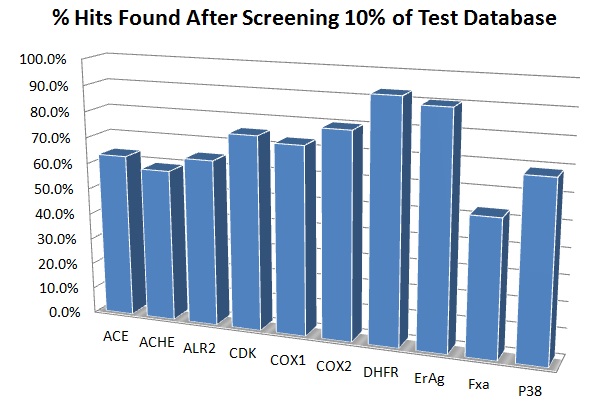High Efficiency Screening – HES
Hudson Robotics has developed a novel approach for the identification of new drug leads that can dramatically cut the time and cost of screening, called “High Efficiency Screening” (H.E.S.). Using H.E.S., researchers can confidently identify the great majority of the leads against a target that may exist in a compound library, while only screening a minor portion (often less than 10%) of that library.
High-Throughput Screening, typically used to screen ALL the compounds in the library, will help the researcher find all of the active molecules that exist in that library. However, besides simply identifying a given compound as a lead, it offers no insight into how that compound interacted with the target
This is also very costly and resource-intensive approach, and alternatives have been developed, such as virtual screens, but none of these offer enough confidence in their results to replace the more exhaustive high-throughput screen.
H.E.S. is ideal for companies or groups who don’t have the budget or resources to conduct a high-throughput screen, and also need more insight into the mechanism of interaction of lead compounds with their target than would be provided by a high-throughput screen effort. This can greatly help to optimize those leads that are found.
- Features
- Specifications
HES is based on the idea that molecules that act by the same biological mechanism share certain shape and electronic characteristics that are recognized by the corresponding protein target.
Standard virtual screening approaches are based on the same principle, producing large lists of screening suggestions, sorted by the degree of similarity between the suggestion and a starting probe. Typically, the most active hits tend to cluster near the top of these list where they are most similar to the probe. As we progress down the list, it becomes increasingly easy to find molecules of the corresponding similarity to the probe, and many of these are inactive.
HES addresses the ineffectiveness of these extended virtual screening lists by generating short lists of molecules that best match the active probes. HES then commands an attached robotic screening system to cherry-pick and assay these suggestions.
Hudson‘s H.E.S. represents a brand new approach in which, using a proprietary algorithm, only a short list of the molecules are considered. This list is then screened in the appropriate assay. The molecules that are found to be active are used to enhance the model and the process is repeated. At the end of the process, the user will have both a list of active molecules, as well as a final model that can be used to search additional compound collections and help guide the synthesis of optimized analogs.
Preliminary results with H.E.S. have been outstanding. In testing against known compound databases, H.E.S. has consistently identified the majority of known inhibitors of 10 different biological targets after screening an average of 1-10% of a diverse library containing approximately 80,000 molecules.
Inhibitors in Study
ACE – Angiotensin Converting Enzyme (19)
ACHE – Acetycholinesterase (17)
ALR2 – Aldose Reductase (14)
CDK – Cyclin-Dependant Kinase 2 (56)
COX – Cyclooxygenase 1 & 2 (11)
DHFR – Dihydrofolate Reductase (14)
ERAg – Estrogen Receptor (Agonists) (10)
FXa – Factor Xa (19)
P38 – P38 Mitogen Activated Protein Kinase (57)
- Inhibitors were taken from the DUD collection (Huang, Shoichet and Irwin, J. Med. Chem., 2006, 49(23), 6789-6801. doi 10.1021/jm0608356)
- The first number in parenthesis indicate the number of inhibitors included in the database. The number represents the number of unique clusters identified for each biological target. One member of each cluster was used.
- The second number indicates the corresponding number of decoys included in the database.


